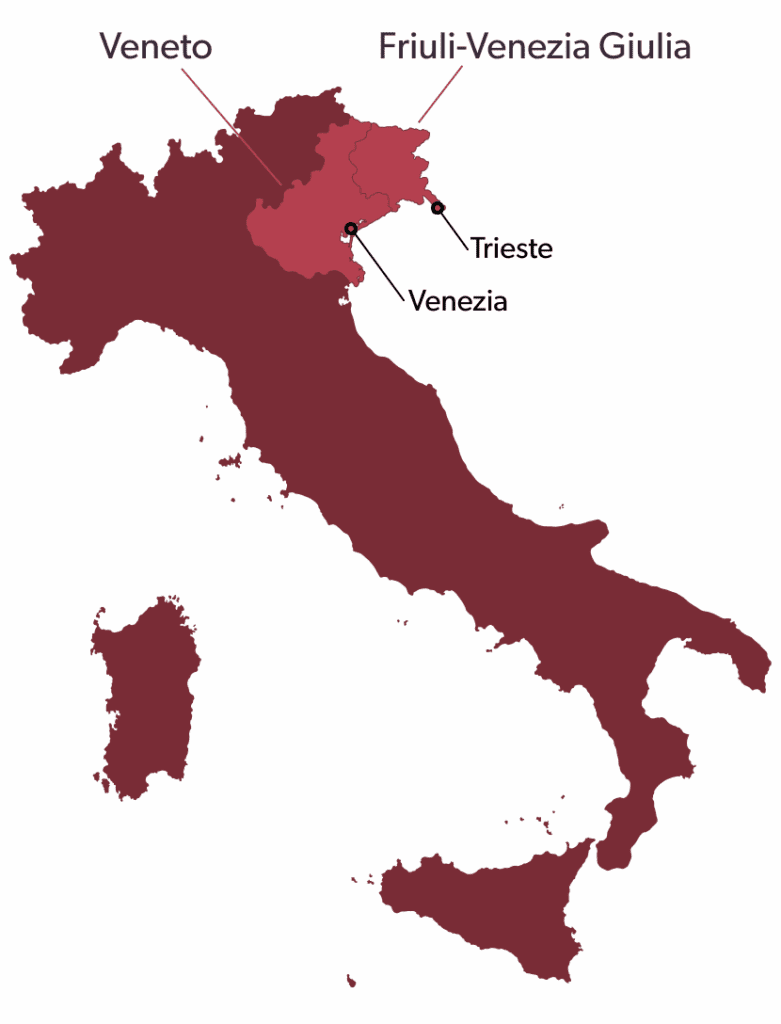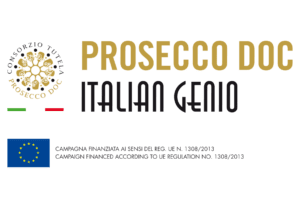Prosecco DOC finally has its own Rosé! The first references of the new product from the leading denomination in the world of sparkling wines arrive in Quebec: Prosecco DOC. After several years of discussion and being faced with the growing success of sparkling rosé wines worldwide, the Consorzio di Tutela Prosecco DOC, which brings together the winegrowers, the wine producers of the appellation, and the competent bodies, decided to authorize the production of Prosecco DOC Rosé.
Rosé sparkling wines in the Prosecco DOC area have been around for centuries now; however, the Prosecco DOC appellation from the Veneto and Friuli Venezia Giulia regions, in northeastern Italy, and the competent bodies in the Italian and EU governments, only recently allowed Prosecco Rosé to add the DOC denomination. Producers of Prosecco DOC finally obtained official authorization in 2020 to produce and export Prosecco DOC Rosé. The DOC status (Denominazione di Origine Controllata or controlled designation of origin) means that it must be produced following specific rules and only within the designated region of Prosecco DOC in Italy, which is made up of nine provinces defined in Veneto and Friuli-Venezia Giulia. As of November 2020, the EU authorized producers of Prosecco DOC to export Prosecco DOC Rosé to foreign markets, including Canada and the United States.
Prosecco DOC Rosé is produced in northeast Italy, according to the particular standards of the Prosecco DOC Product Specifications.
How were Veneto and Friuli-Venezia Giulia able to introduce Prosecco Rosé into the DOC appellation?
Wineries had to follow strict winemaking rules established by the Consorzio di Tutela Prosecco DOC and receive approval from the Italian Ministry of Agriculture, which happened in summer 2020. At the end of October, the EU gave its approval.
According to the Product Specifications, in order to receive the Prosecco DOC Rosé label and distinction, wines must be made with a minimum of 85% Glera (the main indigenous grape variety for Prosecco), 10- to 15% Pinot Nero (Pinot Noir, the only red grape allowed in the blend), and must respect several additional standards and criteria:
- The wine has to go through a natural second fermentation in pressurized tanks called Autoclave – Martinotti/Charmat Method for a minimum of 60 days;
- Sales are authorized from January 1st after the harvest (January 2021 for the 2020 harvest and so on);
- The yields must be 18 tons/hectare for Glera and 13.5 tons/hectare for Pinot Nero;
- The colour is a pale pink with a fine and persistent foam;
- Only the spumante typology is allowed (not still or frizzante) going from the Brut Nature to Extra Dry, depending on the residual sugar. No sweet version of the Rosé will be allowed;
- It is mandatory to indicate the term “Millesimato” on the label, followed by the reference year of at least 85% of the grapes.
What do we know now?
Approximately 17 million Prosecco DOC Rosé 2019 vintage bottles were produced and commercialized in 2020, with 15 to 20% distributed in Italy. Product references are now being exported to leading foreign markets, such as the United States, Canada, United Kingdom, East Asia, France, and the Nordic countries. The forecast for 2020 vintage Prosecco DOC Rosé is to reach between 40 and 60 million bottles, which started being released in January 2021.
While Prosecco DOC Rosé was long overdue, it is finally here! The wait is now over, and you can buy your bottle of Prosecco DOC Rosé at your nearest SAQ! Cheers!


